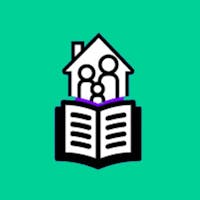
Genograms will most likely be on the National MFT exam. Feedback that I consistently receive from people having recently taken the exam is up to 10-15 questions related to genograms. Genograms originated with Bowen and Extended Family Systems Therapy. It is a specific technique used by Bowen and those using that modality. In addition to Bowen, other modalities have started to use it simply as an assessment tool and intervention. It is designed to help family members recognize problematic patterns of behavior and identify ways to change them.
Genograms resemble family trees and are used to clarify family relationships over three or more generations. It includes information on the name, age, and gender of each family member, significant family events (births, deaths, divorces, etc), and family structures, roles, and relationships. Symbols are used to indicate individual family members and their relationships (a square for a male, a circle for a female, a square within a square for a male identified patient, a circle within a circle for a female identified patient, a dotted connecting line for unmarried partners in a committed relationship, and a solid connecting line with two forward slash marks for divorced partners.
As an assessment tool, genograms are used to collect relevant information about the family’s structure (McGoldrick et al., 2008). As an intervention, genograms help track relational patterns and help families see the patterns that may not be helpful to the family’s overall functioning. It can also be used to shift the family’s focus from a problem lying within one individual family member, to seeing how the family system functions as a whole (Butler, 2008).
You will likely see genogram information and symbols in your study materials. In addition, a website that I like to explore regarding genograms is called www.genopro.com. The website is designed to be a software tool that helps therapists create and design genograms, however for the sake of studying and preparing for the exam there is no need to purchase anything from the website. The website does give a lot of helpful information about genograms including an introduction to genograms, symbols, rules, and understanding family and emotional relationships. When you go to the website, I would suggest scrolling to the bottom of the home page, then clicking on “learn more about genograms”. From there, I suggest playing around with what the website has to offer by seeing examples, learning symbols, and other helpful information.
Below is a question related to genograms from a Bowenian perspective (answer is in the comments). Come back on Friday for a question using a genogram illustration. Although these won’t be exact questions you may see on the exam, they can help you become familiar with ways that questions may be worded (and illustrated when it comes to genograms) to help prepare.
A Bowenian therapist would most likely use a genogram in order to ________________.
Select one:
A. help the participants in therapy understand multigenerational transmission processes
B. pictorially depict the family's boundaries
C. help the identified patient achieve differentiation from the family-of-origin
D. help family members learn about genetic influences on their behavior
(Answer and rationale will be posted in the comments next week. Come back next week for a question asking you to read and interpret a genogram).


